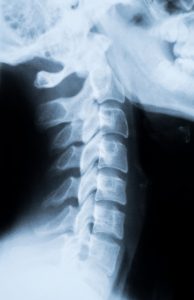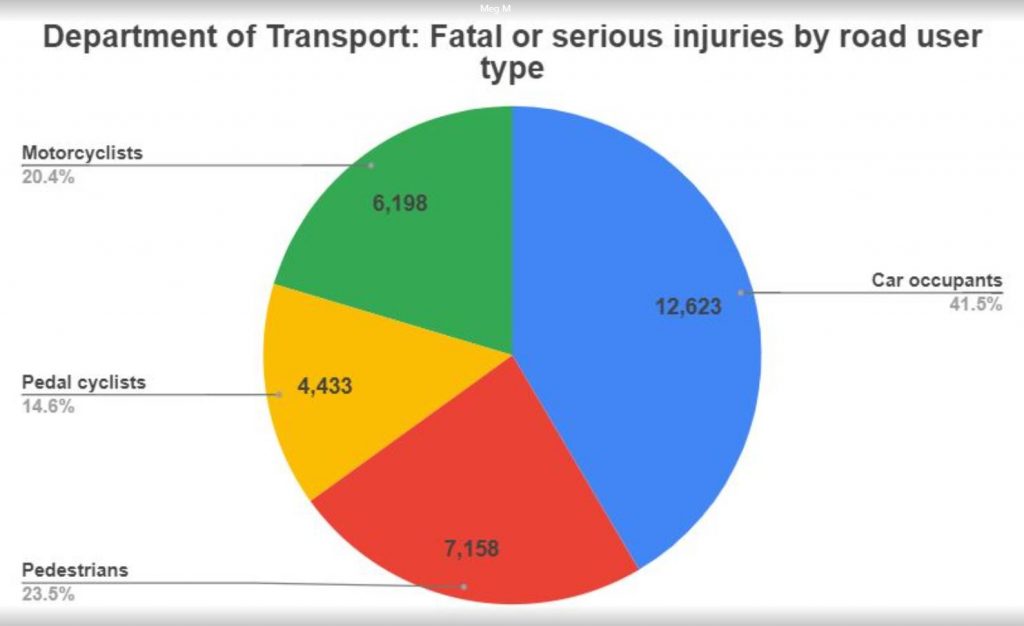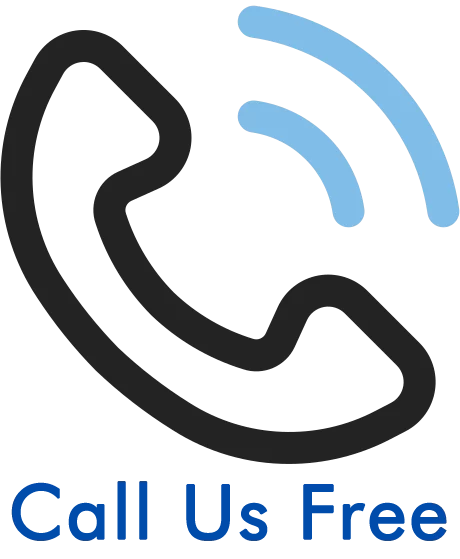Atlas Fracture Compensation Claims In The UK
Have you suffered an injury as a result of someone breaching their duty of care? Are you dealing with the life-changing consequences of an accident that someone else’s negligence caused? If so, our guide on claiming atlas fracture compensation could help.

Atlas fracture compensation
Understandably, it can be difficult to work out whether someone was liable for your accident. However, there are certain situations in which you may have been owed a duty of care. For instance, at work, in a public place, on the road or even when accessing medical help from a healthcare provider.
Our guide aims to help you understand when someone might have been liable and the evidence needed to prove negligence.
However, if you still have questions, you can call our advisors who can assess whether you have a valid claim. If they feel it has a chance of success, they could connect you with a personal injury solicitor to represent you on a No Win No Fee basis.
Get In Touch With Our Team
Although we’ve aimed to cover as much information about making a personal injury claim, we understand if you still have questions. If so, contact our team on the following details for further help and advice:
- Telephone number — 020 3870 4868
- Chat with us on live chat at the bottom of the page
- Arrange a call-back with us using the form
Services And Information
- Everything You Need To Know About Atlas Fracture Compensation Claims In The UK
- What Is An Atlas Fracture?
- Cervical Spinal Anatomy
- Symptoms Of A C1, Jefferson Or Atlas Fracture
- What May Cause A Jefferson Or Atlas Fracture?
- Jefferson Or Atlas Fracture Compensation Calculator
- How Are Cervical Spinal Fractures Diagnosed And Treated?
- What Is A Missed Cervical Spinal Fracture?
- Why Are Atlas Fractures Misdiagnosed?
- How Long Do You Have To Claim For A Spinal Fracture?
- What Steps Should You Take After Fracturing Your Atlas Bone?
- Claim Atlas Fracture Compensation On A No Win No Fee Basis
- Related Information
- FAQs About Cervical Spinal Fractures
Everything You Need To Know About Atlas Fracture Compensation Claims In The UK
If you’ve been involved in an accident where you suffered a spinal fracture due to someone else’s negligence, you may have grounds to claim. Whether the injury was sustained in an accident at work as a result of your employer leaving equipment out in the office. Or it was caused by another driver crashing into you from behind as a result of them texting while driving.
Either way, if someone breached their duty of care to you, you could claim compensation. Our guide will look at the types of damages you could claim compensation for and how much your claim may be worth. To help, we’ve created an alternative to a personal injury claims calculator. Our compensation table could give you an idea of how much your claim is worth based on the injuries you sustained.
Additionally, we’ll be exploring how you can access legal representation through a No Win No Fee agreement. If you’re apprehensive about using a solicitor due to the costs usually associated with doing so, this option could help.
Keep in mind that you can call us if you have any questions after reading this guide. Alternatively, continue reading for more information.
What Is An Atlas Fracture?
The spine is made up of bones called the vertebrae. The atlas bone also called the C1 vertebra, is at the top of the spine closest to the skull. It’s a ring-shaped bone made up of the following parts:
- Anterior arch
- Lateral masses
- Posterior arch
- Transverse processors
Cervical Spinal Anatomy
The spine is categorised into several sections with the neck being classified as the cervical vertebrae. There are seven bones that make up the cervical spine, called C1-C7, and each has a significant role to play in providing structural support that keep you upright. It also protects the top of the spinal cord.
The top of the spinal cord and the cervical spine work alongside each other to help you do the following:
- C1 is called the atlas and C2 is called the axis. These work together to allow the head and neck to move in different directions. Additionally, the C3 vertebra works with respiratory muscles.
- The rest of the cervical vertebrae, C4-C7, help you with movement, gripping and sensation in different parts of your shoulders, arms and hands.
Additionally, the cervical spine and spinal cord play a role in helping your diaphragm to contract while you’re breathing. If the cervical spine is fractured, this can put pressure on or damage your spinal cord causing unpleasant symptoms.
Symptoms Of A C1, Jefferson Or Atlas Fracture
The cervical spine is complex and any injuries that you suffer to this part of your body could result in different symptoms depending on the severity or type of fracture you have. For instance, if you suffer a C1 fracture without damaging the spinal cord, you may experience pain among other symptoms.
However, if the spinal cord has been damaged, it could cause further symptoms such as numbness or trouble breathing. Additionally, more severe symptoms might include paralysis from the neck down or death.
If someone you know has suffered a fatal accident due to injuring their cervical spine or irreparable damage to the spinal cord, you could claim compensation on their behalf. To hold a valid claim their accident must have happened due to a breach in the duty of care owed to them by a party who had a responsibility for their safety. Call our team for more information and they’ll help you get started with your claim.
What May Cause A Jefferson Or Atlas Fracture?
You might be wondering ‘how do you get a Jefferson fracture?’. If so, this section could help provide an answer.
A Jefferson fracture which is a fracture of the C1 anterior or posterior arches could be caused by various things. In order to make a claim for a Jefferson fracture you must be able to prove three key areas;
- You were owed a duty of care
- That duty was breached through negligent actions or inactions
- You suffered fractured vertebrae as a result.
If you’re unsure of whether someone was liable for the accident that caused your injury, we’ve explored some common examples to help. For instance:
- Road traffic accident: All road users are expected to provide a duty of care as per the Road Traffic Act 1988. Failing to do so could result in a high impact car accident caused by someone speeding through traffic lights and crashing into oncoming traffic.
- Accidents at work: Employers are expected to do everything reasonably possible to keep you safe as set out in the Health and Safety at Work etc. Act 1974. For instance, they should keep the workspace clutter-free to avoid slips, trips or falls that could cause an employee to break their neck.
- Public place accidents: The Occupiers Liability Act 1957 sets out rules and regulations for occupiers of a public place to abide by. This might include risk assessments to ensure they prevent customers from coming into harm. If they don’t, a customer could end up falling down the stairs in a shop due to poor lighting and no trip hazard warnings.
For more information on determining whether you were owed a duty of care, get in touch with our team on the number above.
Broken Atlas Statistics
According to the Reported Road Casualties in Great Britain: Annual 2019 report, there were 153,158 casualties of all severities. 25,945 of those were reported to the police as serious injuries.
Furthermore, there were 408 broken neck or back injuries recorded. However, the actual figures may vary as recordings alter.
The graph below shows how some different road users were affected. It provides figures, from the Department for Transport, of the serious or fatal injuries suffered by these groups.

Atlas fracture compensation statistics graph
Jefferson Or Atlas Fracture Compensation Calculator
The atlas fracture compensation you could be awarded when you make a personal injury claim may be made up of different damages. For instance, general damages cover the pain and suffering your injury has inflicted on you. Additionally, they’ll cover any long term or ongoing issues you’ve been left with such as pain, deformity or immobility.
Additionally, you could claim any past or future financial losses as special damages. For instance, if you’ve suffered from reduced earnings as a result of not being able to work. Or care costs due to the severity of your injury.
These may be claimed under special damages and will be worked out separately to general damages as not every claim will have them. The two may then form your overall compensation package.
What is my atlas fracture claim worth?
The table below provides figures for general damages, the figures come from the Judicial College Guidelines (JCG), a document solicitors may use to value claims.
| Injury | Description | Award |
|---|---|---|
| Neck Injuries | Severe: (iii) Injuries causing fractures or dislocations or severe damage to soft tissues and/or ruptured tendons that lead to chronic conditions and significant disability. | £42,680 to £52,540 |
| Neck Injuries | Minor: (iii) Where a full recovery is made within three months. | Up to £2,300 |
| Back | Moderate (ii): Disturbance of ligaments and muscles giving rise to backache. | £11,730 to £26,050 |
| Back | Minor (i): Where a recovery takes place without surgery within about two to five years. | £7,410 to £11,730 |
| Back | Minor: Where a full recovery is made within three months. | Up to £2,300 |
| Brain Damage | Very Severe Brain Damage: There will be certain factors considered to determine the award for this injury e.g. the degree of communication, life expectancy, extent of physical limitations, sensory impairment, requirement for gastronomy for feeding. | £264,650 to £379,100 |
| Brain Damage | Moderate Brain Damage: (i) Cases in which there is moderate to severe intellectual deficit, a personality change, an effect on sight, speech and senses. | £140,870 to £205,580 |
| Brain Damage | Moderate brain damage: (iii) Cases in which concentration and memory are affected. | £40,410 to £85,150 |
You should only use these figures as a guide, though, as they may vary depending on the severity of your injury. Additionally, special damages such as loss of earnings aren’t included so if you have any, your claim value may vary again.
For more information on compensation, get in touch with our team and they’ll be happy to help.
How Are Cervical Spinal Fractures Diagnosed And Treated?
A doctor may assess the severity of your fracture by sending you for an X-ray, CT or MRI scan. This will allow them to assess the type of fracture you have and whether you have any damage to your spinal cord as well.
The treatment you may receive will depend on several things. For instance, the severity, which part of the cervical spine you fractured and whether your spinal cord has been affected.
For some simple neck fractures, you may require a brace to support your neck while the injury is healing. However, for some more severe injuries, you may require other forms of treatment.
For instance:
- Brace or collar: minor fractures may be treated with a brace or collar for immobilisation.
- Cervical spinal fusion surgery: This may be performed alongside other surgeries. It’s usually used to treat severe unstable cervical fractures or compressed spinal cords. It involves joining two vertebrae together with metal screws and plates to create one stable piece of bone.
- Rehab and physiotherapy: This may help alleviate some stiffness and regain strength in the muscles.
If you’re wondering ‘how long does it take for a C1 fracture to heal?’, it may depend on the severity of your injury and whether you’ve damaged your spinal cord.
What Is A Missed Cervical Spinal Fracture?
Medical professionals have a duty of care to do everything reasonably possible to prevent you from experiencing avoidable harm. If they don’t it can result in situations where a proper diagnosis and the correct treatment isn’t given.
For example, a doctor may fail to see your fractured atlas on an X-ray. If this happens, it can lead to several complications such as symptoms worsening over time and leading to more severe outcomes.
Or it could lead to a misdiagnosis. For instance, you may have fractured your atlas and damaged your spinal cord but the doctor failed to diagnose the damage to your spinal cord. This may mean your symptoms are left untreated.
Furthermore, the fracture may continue to put pressure on the spinal cord, causing ongoing pain, more numbness and less mobility than before.
Additionally, the doctor could diagnose you with the wrong type of atlas fracture leading to a missed Jefferson fracture.
Proving clinical negligence
When assessing whether a doctor has been negligent, the Bolam Test may be carried out. This involves seeking the opinion of an unbiased medical professional. If they disagree with the course of action taken to diagnose or treat a patient, then it helps to show that there may have been negligence.
Additional evidence may help to show a medical professional breached their duty of care to you. For more information on the steps you can take to build a valid claim, see below.
Why Are Atlas Fractures Misdiagnosed?
A fractured can go undiagnosed for different reasons. In some cases, it’s not the doctor’s fault when a fracture is missed.
For example, if they hadn’t sent you for an X-ray at the time, it could have been because you did not communicate all your symptoms to the doctor or was not clear about how the accident happened. Swelling and deformity can also prevent the doctor from getting a clear picture of your injury. In these cases you should be either sent for additional testing or tests should be redone once the swelling has subsided.
However, in other cases, the standard of care provided may have not been what it should have. Some examples of how this might happen include:
- Lining up the X-ray machine the wrong way so they couldn’t get a correct picture of the fracture leading to a misdiagnosis
- Not ordering an X-ray when the patient had symptoms of a fracture
- Failing to assess a patient properly and not getting an accurate picture of the state of their injuries before diagnosing and treating
If you’re still unsure whether a medical professional acted negligently, give our team a call on the number above for more information on medical negligence.
How Long Do You Have To Claim For A Spinal Fracture?
The general personal injury claims time limit is three years. Either from the date of the accident or the date you obtained knowledge that the accident at least contributed to your injuries. However, there are many exceptions to this time limit.
Firstly, if your child under the age of 18 was injured, the three years are frozen until they turn 18. During this time, someone could act as a litigation friend and claim on their behalf until they turn 18. This could be a personal injury solicitor, parent, guardian or family friend.
Alternatively, after they turn 18, they have three years from the date of their 18th birthday to claim for themselves.
Additionally, if someone lacks the mental capacity to claim for themselves someone could act as a litigation friend for them. If there is a chance they could regain their mental capacity, the three-year time limit is frozen and someone could claim on their behalf during this time.
However, if they regain their mental capacity, the three years will start from the date of recovery. If they won’t regain their mental capacity, the three-year time limit is frozen indefinitely.
If you have any questions regarding the time limit, please don’t hesitate to get in touch with our team.
What Steps Should You Take After Fracturing Your Atlas Bone?
Obtaining evidence is a vital step in supporting your atlas fracture compensation claim. You’ll require medical evidence to prove the injuries you’ve sustained and the state of your injuries. For example, medical records or other medical documents.
Additionally, you may be invited to an additional medical assessment which will provide an independent report. As well as providing evidence of the injuries you sustained, this could also help when valuing your claim alongside the JCG.
Other evidence you may require to prove the accident happened might include:
- CCTV footage
- Witness details
- Pictures of the accident and injury
- Police reports, if applicable
Furthermore, you’ll require evidence for additional damages such as receipts and payslips.
Claim Atlas Fracture Compensation On A No Win No Fee Basis
Understandably, you may have been left with little money to spare due to the financial losses you may have faced from your injury. However, we want to help you access an expert solicitor who is experienced in handling claims similar to your own.
For that reason, our advisors can connect you to a solicitor to represent you on a No win No fee basis. This means if they lose your case, you won’t pay solicitor fees. If they win, you’ll pay a small success fee. However, it’s capped and you can decide on the fee with your solicitor.
It allows you to avoid upfront costs. And you can get help from an experienced personal injury lawyer to help you get the compensation you deserve.
For more information, contact us on the following details:
- Call us on 020 3870 4868
- Chat with us on live chat at the bottom of the page
- Arrange a call-back with us using the form
Related Information
If you’re wondering about the rights you have after an accident at work, our guide could help.
For more information on claiming for an accident in a public place, see our guide.
If you were a pedestrian hit by a car in an accident, see our guide for more information on claiming compensation.
For any further medical advice, see the NHS website.
If you want to learn more about the prevention of accidents, see the Royal Society for the Prevention of Accidents.
See the Medical Act 1983 for further details on the duty of care you’re owed by a healthcare provider.
FAQs About Cervical Spinal Fractures
What happens if you break your C1 and C2?
The treatment you receive may vary depending on how severe the injury is. However, you may require a neck brace, surgery or physiotherapy or a mix of all three.
How Serious Is A C1 Fracture?
C1 fractures can vary in severity. However, it’s important to seek medical advice if you have symptoms of a fractured neck.
Could I claim for a child or family member?
Yes, you can claim on behalf of a child under the age of 18 or a family member who lacks the mental capacity to claim themselves.
What happens to damages awarded to children?
Any compensation awarded to children will be kept in a Court Office Fund until they turn 18. However, applications may be made to access money earlier for the child.
Thank you for reading our guide on how you can claim for atlas fracture compensation. We hope you found it helpful.
Writer AC
Checked by EI.





